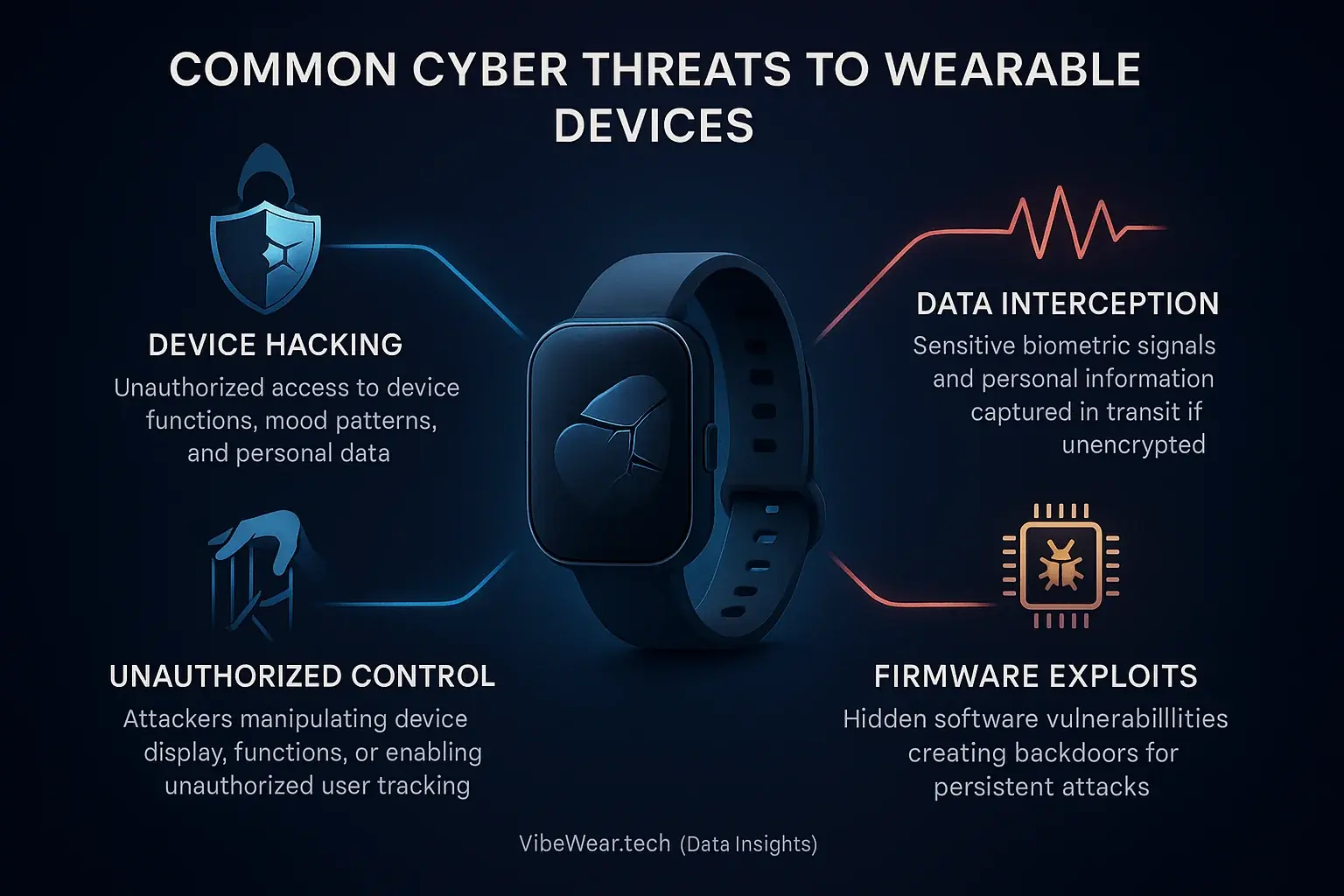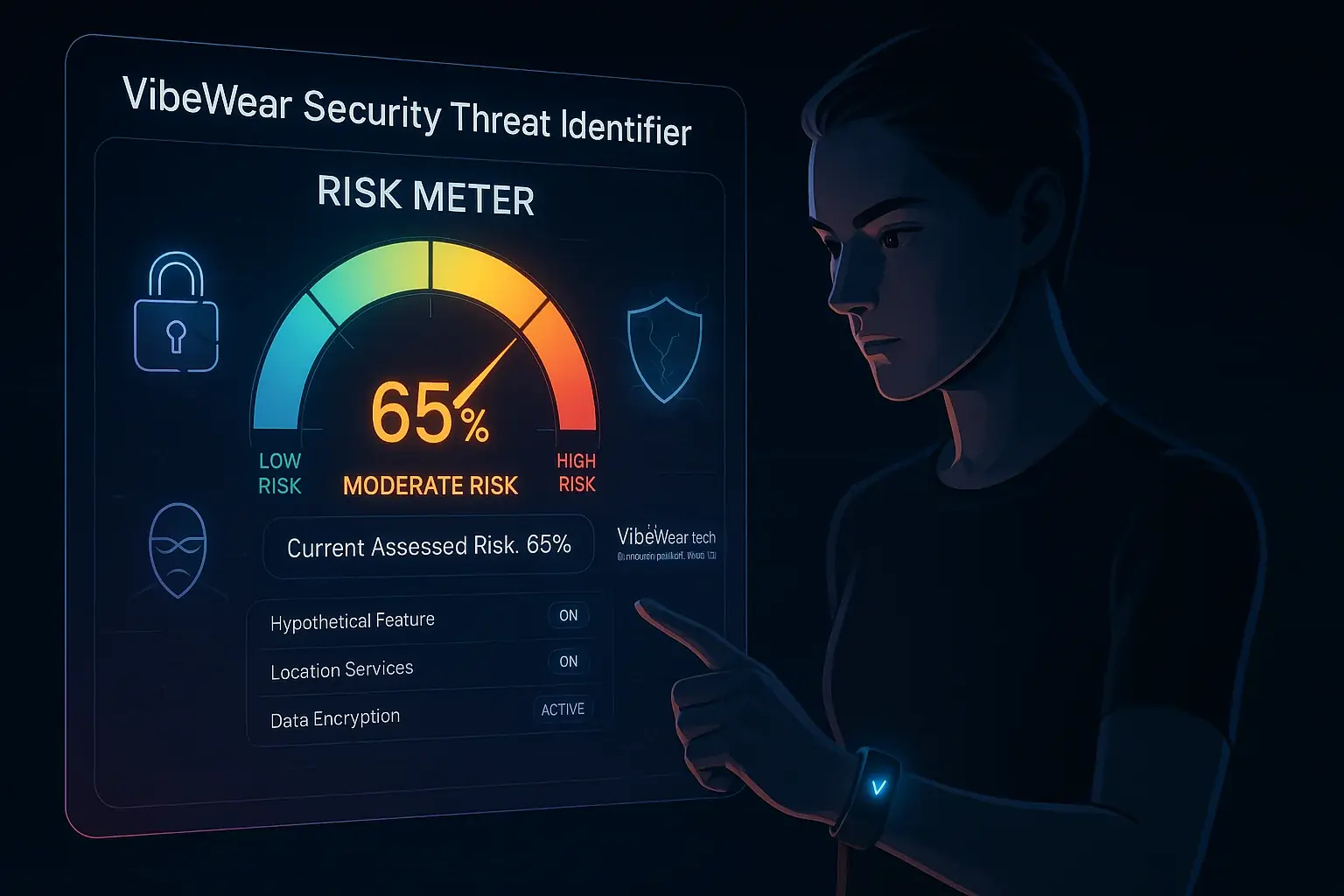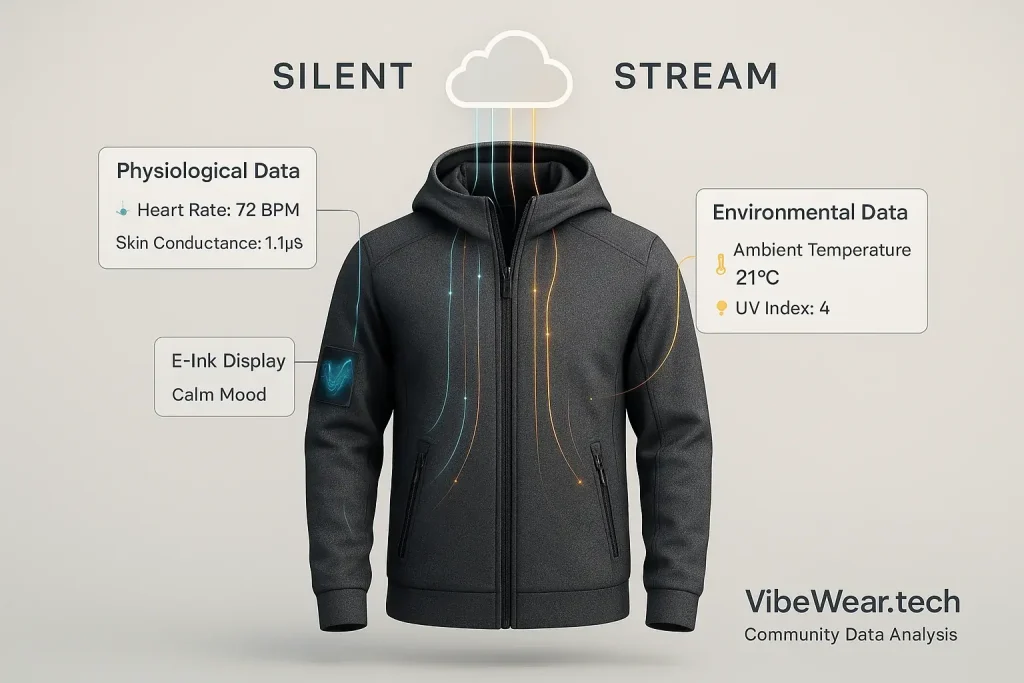Why Your Mood-Adaptive Clothes Need Ironclad Cybersecurity

Your clothes feel like a second skin. With VibeWear, this connection becomes literal. What about its digital security then? Mood-adaptive clothing collects deeply personal data. This makes robust cybersecurity non-negotiable. The technology excites. Privacy implications are immense.
VibeWear can tap into your actual mood. It charts your emotional fluctuations. This data is incredibly sensitive. VibeWear's analysis suggests a potential vulnerability. Without strong security, this digital 'second skin' could expose your inner world. Imagine your private emotional shifts becoming public knowledge. The thought is deeply unsettling for many.
Here at VibeWear.tech, we believe understanding these risks is the first step. We have investigated potential digital vulnerabilities. We also explore methods to fortify your adaptive apparel. This knowledge empowers you. It ensures your self-expression remains truly yours. Your personal data deserves protection.
The Digital Cracks: Common Cybersecurity Vulnerabilities in Wearable Tech

Even the most innovative tech has weak points. For VibeWear, these digital cracks could expose your personal data. They might even hijack your expression. We explore device hacking, data interception, unauthorized control, and firmware exploits as key vulnerabilities.
Imagine someone gaining unauthorized access to your VibeWear. They could potentially see your mood patterns. Attackers might even control your display. Then there is data interception. Your sensitive biometric signals, sent wirelessly, could be snatched by malicious actors if not properly encrypted.
Bad actors might try to take over your device. Imagine your VibeWear displaying something you did not intend. It could even track you without your consent. Firmware vulnerabilities create backdoors for these kinds of attacks. These exploits often hide deep within device software. Here is an unspoken truth. Many early tech gadgets prioritize features over ironclad security. This approach leaves users exposed.
VibeWear Security Threat Identifier: Assess Your Risk

Identify Potential Security Threats for Your VibeWear
Select features your hypothetical VibeWear might have to understand potential security considerations.
This VibeWear Security Threat Identifier is not just a gadget; it is your personal guide to understanding potential digital risks. Select hypothetical features. The tool instantly highlights associated security concerns. This gives you a clearer picture of what to watch out for.
The tool offers more than risk identification; it provides practical, actionable tips. VibeWear tailors these tips to your selections. Insights from VibeWear's deep dive into wearable cybersecurity empower your smarter digital choices.
Fortifying Your Vibe: Best Practices for Secure Mood-Adaptive Clothing

Knowing security risks is one thing. Taking action is another. Protecting your VibeWear involves you, alongside robust manufacturer security commitments. Your actions are vital. VibeWear's investigation presents these strategies to keep your digital 'second skin' truly secure.
- Keep Firmware Updated: Think of firmware updates like vital security patches for your phone. They fix vulnerabilities. Many users overlook this essential step. Regular updates close potential backdoors hackers could exploit.
- Strong Authentication is Your Shield: Your VibeWear app needs a strong password. Better? Use multi-factor authentication (MFA) if available. This strategy adds layers of protection. It makes unauthorized access far harder.
- Understand Your Data Flow: Where does your mood data go? Is it encrypted? Always check privacy policies for clarity on data transmission and storage. Insist on end-to-end encryption for sensitive information; this is non-negotiable.
- Be Smart with App Permissions: Connecting third-party apps? Always review what permissions they request from your VibeWear. Do not grant access to mood data without complete trust. Understand why an app needs that specific information before proceeding.
These steps are not mere technicalities. They form your personal defense line. By adopting these practices, you protect your data. You also champion a more secure future for all adaptive fashion. Here's a tip many miss. A quick check of your device's security settings after every major update can save future headaches.





